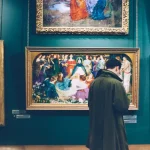Things to Know When Buying Limited Edition Art

- 09 Aug, 2024
- Admin
Things to Know When Buying Limited Edition Art
Purchasing limited edition art is a perfect way to own exceptional, unique, and valuable pieces. These artworks are not like mass-produced prints because they are created in a fixed number, resulting in each of them being exclusive and rare. Regardless of whether you are new to collecting art or have been doing it for years, it is worth remembering that buying limited-edition prints demands a meticulous understanding of what actually makes the artwork special.
The reason behind the high demand for limited edition prints is exclusivity, along with a direct relation to the artist’s vision. Every single print is part of a controlled series that the artist oversees, guaranteeing originality and quality. But, maneuvering the market for limited edition prints can be challenging. This is where having appropriate knowledge can help a lot. Here are the things to know when buying limited-edition art.
1. The Edition’s Size Never Changes
Thanks to techniques like printmaking, photography, and cast sculpture, artists are able to create more than one version of the same work. Even though these artworks are not unique in any way, they are still known to be original. They might just be as important to artists as their one-of-a-kind works. With limited editions, artists actually decrease the total quantity of artwork produced in the edition. It ensures that every single print will retain its value over time.
Artists and printers usually destroy the materials they use to create these artworks, which can include anything from photographic negatives to printing plates. This helps them guarantee that it is not possible to add to the edition in the future. It is best recommended that when discussing an edition with an auction house or gallery, you confirm that the one you are purchasing is from the first edition.
In a few cases, galleries and artists might decide to extend a particular limited edition. They are likely to label these extended ones as a second edition, third edition, etc. Remember that since these prints are farther from the artist’s original work, they won’t be as valuable in comparison to the ones from the first edition.
2. Each Print in the Edition is Identical
As a general rule, every single piece in a limited edition must look the same. If one of them is substantially different from the other ones, then it should not be included in the standard edition. When it comes to differentiating between individual artworks in a specific edition, artists will label every single one of them with a different number. People can typically find this numbering alongside the total edition size, like 1/30 and 30/30. This clears the misconception that editions are numbered in the specific order they are printed. This is not the case because artists typically number their works at random while signing. It is something that every individual who is starting to collect limited-edition art should keep in mind.
3. Smaller Editions Are Much More Valuable
If the edition sizes are smaller than usual, the individual prints become very rare, and such scarcity makes them more appealing to people and it makes the investment worth it for them. For instance, a print from an edition of 30 will be more valuable than something similar from an edition of 100. The size will often vary significantly depending on things like the physical limitations of the artist’s technique and the demand from collectors. In prints where printmaking techniques like drypoint are utilised, the editions are smaller. However, they are bigger if durable methods such as lithography and screen printing are used.
4. The Proof of Artist Add to the Edition Size
Limited edition prints also typically include artist’s proofs, which are generally listed as “AP” or “A/P” in the information of the edition. Other types of proofs are less common than these. Traditionally, artists used these proofs for their personal collections. Prints that belonged to the artists are even more valuable in today’s market. People also desire proofs if they are unique in some way, like those that contain notes from the artist. However, these proofs should not account for more than about 10% of the edition size. Such information about limited edition art is paramount for anyone wanting to start collecting such prints.
Wrapping Up
Buying limited-edition art can be rewarding for plenty of individuals. However, it is important to have sufficient information before proceeding with the purchase. The things mentioned in this article are ones every art enthusiast should know.



